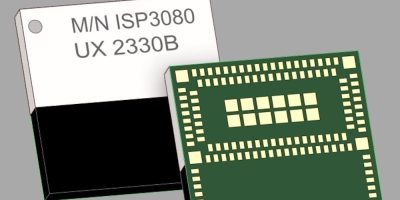Showcasing Insight SiP’s integration and miniaturisation expertise, the ISP3080 UWB-BLE module combines ultra wideband (UWB) technology with Bluetooth Low Energy (BLE).
The module is a fully integrated device, requiring only power to create a fully functioning UWB and BLE node with both antennas integrated into the module. It uses Qorvo’s QM31100 UWB chip and Nordic Semiconductor’s nRF52833 BLE device.
The company claimed that for UWB, it offers “massively improved” power consumption compared with previous generations, and interoperability via conformance to the FiRa standard. This allows UWB connections both to other vendors’ FiRa compatible chipsets and UWB equipped mobile phones, such as the latest generation Apple, Google and Samsung devices.
Ultra-low power can be achieved by using a combination of Bluetooth and the integrated accelerometer to switch on the UWB transceiver only when necessary, advised Insight SiP.
The module measures just 12 x 12 x 1.5mm. Applications include secure entry, real-time location systems, ticketing and barrier control and hands-free key solutions.
The device offers a wide range of peripherals for a selection of digital and analogue connections, including UWB, SPI, UART, I2C, programmable general purpose I/Os and on-board ADCs.
Nick Wood, sales and marketing director for Insight SiP commented: “With the FiRa standard gaining wide acceptance and the implementation of UWB on mobile phones, we believe ultra-wideband has truly “come of age” and will become an increasingly prevalent technology.”
Insight SiP has an R&D team based in Sophia Antipolis in the south of France. The company specialises in the miniaturisation of RF modules using system in package (SiP) technology. Its offers what is believed to be the smallest complete BLE module in the world, the world’s first antenna-in-package, the world’s first UWB/BLE and LoRa/BLE combo modules with integrated antennas, and the world’s smallest microcomputer in an SD card format.
Founded in 2005, Insight SiP has a subsidiary in the US, a sales office in Japan and a network of over 30 distributors across the globe.







